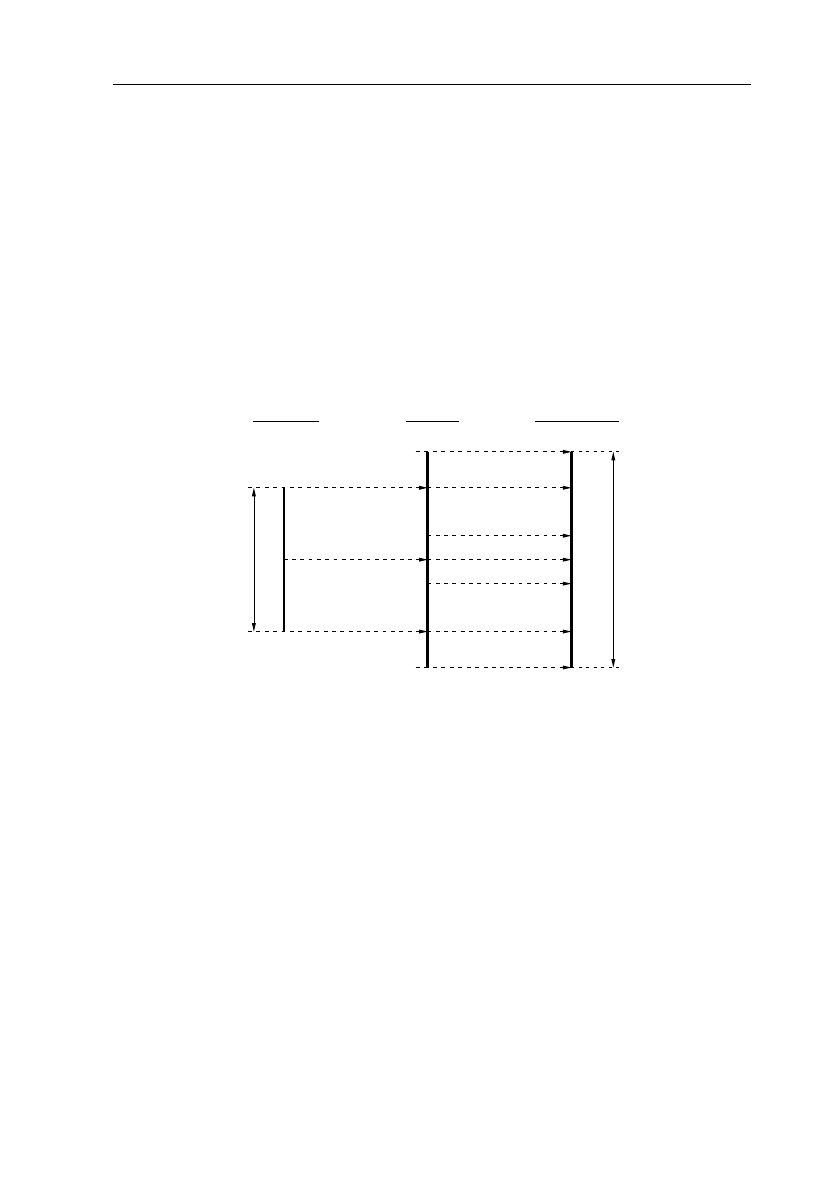
USING THE COMBISCOPE INSTRUMENTS 3 - 31
3.4.3 Conversion of trace data
The trace data is sent as a block of binary codes. Trace samples can be formatted
to consist of 8 bits (1 byte) or 16 bits (2 bytes) codes, which can be selected by
the FORMat command. Refer to section 3.10.1 "Trace formatting" for a further
explanation of this command. After
*
RST the samples are sent as 2 byte codes.
When samples are formatted as two bytes, the most significant byte (msb) is sent
first, followed by the least significant byte (lsb). The sample values that are sent
in the block, are coded according to the two’s complement notation. The relation
between the screen positions, the values of the trace samples and the decimal
value of the corresponding binary codes, is shown in the figure below.
The value of the trace points relate to the vertical position of the corresponding
sample on the screen of the CombiScope instrument. As the figure above shows,
the sample with value 25600 corresponds with the top position of the screen.
Similarly, the samples with values -25600 and 0 correspond to the bottom and
mid-position respectively. This applies to trace samples that are formatted to
consist of 16 bits (2 bytes). The values that apply to the 8 bit (1 byte) format are
placed between parenthesis.
The ADC allows trace acquisitions that are somewhat outside the vertical screen
boundaries. Trace acquisitions use the full dynamic range of the ADC. This results
in a dynamic trace range of 65535 points, whereas the screen range is limited to
51200 points.
top
mid
bottom
screen
range
32767
(127)
25600 (100)
1(1)
0(0)
-1 (-1)
-25600
(-100)
-32768
(-128)
32767 (127)
25600 (100)
1(1)
0(0)
65535
(255)
39936
(156)
32768
(128)
trace
range
Decimal value
of byte code
Trace sample
value (Ts)
Screen
position (Ps)
ST7187
Note: Numbers between parenthesis apply to single byte format.
Fi
g
ure 3.11 Relation between screen position and trace value


















